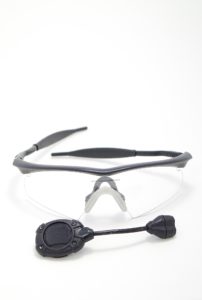
Today I am talking about two important items that are often over looked, eye protection and helmet lights.
This is the final post in a four-part series on helmets and helmet mounted equipment for SWAT teams. In the previous posts, I covered, helmets, hearing protection, and night vision devices.
Eye Protection
I have seen a lot of people on different SWAT teams forgo eye protection.
I was one of those guys for a time. When I first got on the team I wore eye protection all the time, and then I stopped wearing it consistently for no specific reason.
In a moment of clarity, I realized how stupid I was being by not wearing eye protection. I realized that there were plenty of things other than bullet fragments that I might want to keep out of my eyes.
So, I started to wear my eye protection again during operations and training.
A few weeks later during a search warrant, I was opening a soffit to access an attic space. As I pushed the soffit aside, a large sheet of fiberglass insulation fell on my face. I had tiny pieces of fiberglass insulation on my face, all over my vest, down my shirt, and in my heavy vest.
My eye protection kept every fiber of insulation out of my eyes, and saved me from a miserable ride home.
That event made me realize how lucky I was when I was not wearing eye protection during a call-out.
Fast forward a year to another SWAT operation, and I had someone shooting at me through a closed door. I literally did not see that one coming.
Or what came next. Fragments of something slammed (and I do mean slammed) into my eye protection and cheek. If any of the debris had hit me in the eye it would have caused some serious trauma to my eye.
Fortunately, I was wearing my eye protection. Left eye saved. I already appreciated the value of eye protection after the fiberglass facial, and I loved it after the gunfire and frag.
There is one universal truth when it comes to eye protection; it is cheaper than eye surgery (if you are lucky and the damage is operable).
Helmet Lights
I touched on helmet lights briefly in the night vision post. However, their effectiveness warrants a deeper explanation.
If you are on a SWAT team you are going to need a secondary light source for non-shooting related tasks. A lot of the operations for my team happen in the early hours of the morning or late at night, so a task light comes in handy on most call outs.
I’m dating myself when I say this, but when I first got on SWAT, the only helmet mounted lights available were headlamps that guys put strapped to their helmets. Heck, it was years before I saw accessory rails on helmets.
I carried a flashlight on my waist belt. That light was very useful but a pain to access, because of the retention method (I didn’t want to lose my light somewhere).
The light was also a little bulky. It was just a two-cell flashlight (CR123s), but it was taking up precious space on my gear.
Fast forward several years and there are tons of purpose built helmets with rails to choose from. Rails that you can mount equipment on, like a small task light.
Ever want to check the address of the target location or a photo of the suspect one last time, in a dark vehicle jammed full of SWAT guys? I know I have.
How easy is it to pull a flashlight off a waist belt or plate carrier in that situation?
Not as easy as reaching up and pushing a button on your helmet rail mounted light.
Like the name says, ‘rail mounted’ lights are held by your helmet rail, leaving your hands free to turn the illuminated pages of a document, chamber check a weapon, or render aid to a wounded teammate.
Don’t forget about size. The light is about the length of my index finger and weighs well under one ounce, with batteries.
A helmet mounted task light provides a high degree of easily repeatable, access that can’t be beat by a hand held light.
Wrap Up
Eye protection and helmet lights. Two small items that can make a huge difference.
If you already use one of the two than you know what I mean. If you don’t, give one a try.
I would suggest the eye protection. A helmet light won’t help you see in the dark if your eyes catch some frag.
